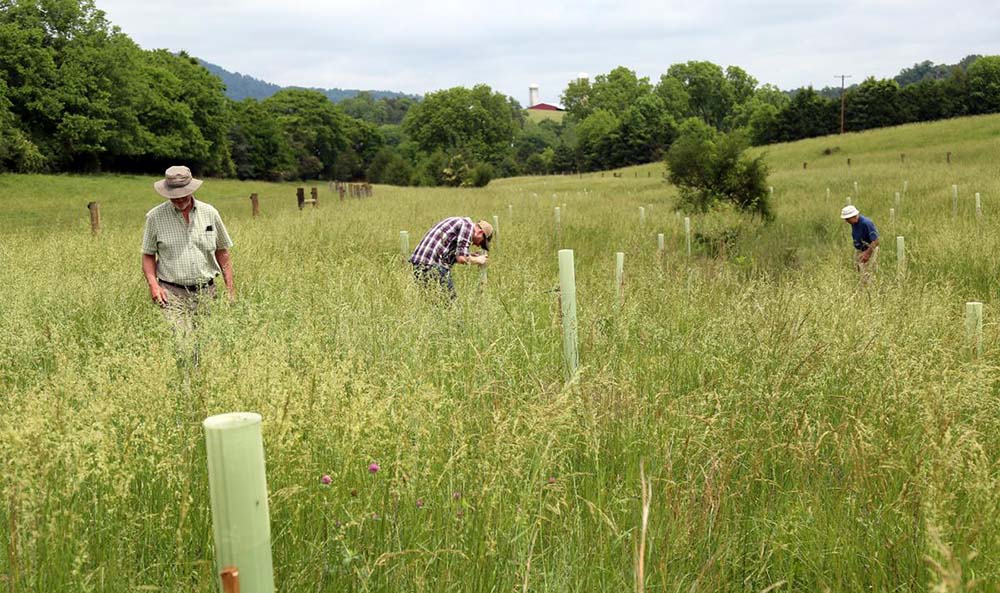Through the Headwaters Stream Initiative, an astounding 3,765 trees were planted on 16 acres the Goodall property in Madison County, including 4,600 linear feet of stream.
Restoring Wildlife Habitat
Whether you live in urban, suburban or rural areas, you can make a positive impact on surrounding fish and wildlife populations. Our web resources are intended to give you the tools to manage your Piedmont lands and waters for greater biodiversity, productivity, and environmental quality.
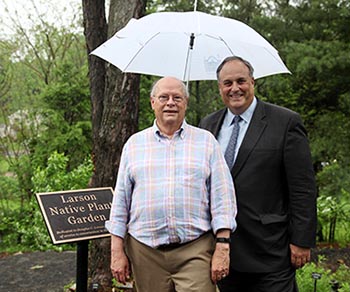
Larson Native Plant Garden Opening
With umbrellas in hand, attendees of the Larson Native Plant Garden Reception ventured out to admire the well-designed landscape around PEC’s headquarters office in Warrenton, Va. Named in honor of the organization’s former vice president, Doug Larson, the visionary of the project, the garden has 118 species of native perennials, woodies and grasses.
“It’s already proving to be an educational tool,” says Doug. “People in our beautiful front yard were reading the names of the plants and really taking it all in; and that’s just folks walking down the street. I think it’s going to show people in Warrenton what they can do with native plants.”
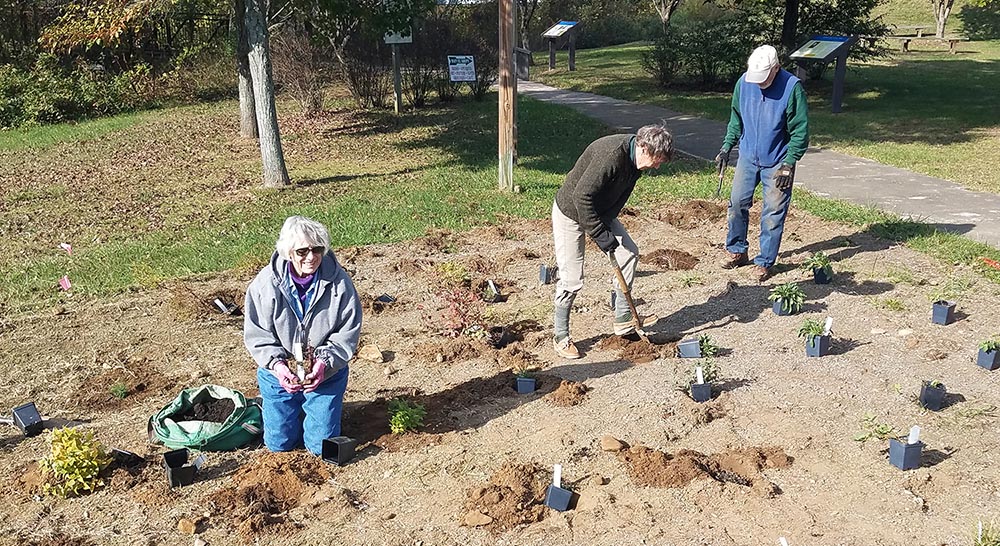
Pollinator Garden Planted by Thornton River
PEC partnered with the Endangered Species Coalition (ESC), Cliff Miller Jr. and RappFLOW to install a pollinator garden next to a walking trail by the Thornton River in Sperryville, Va. Using native plants such as perennials, grasses and shrubs from Hill House Farm and Nursery, the garden was installed during a volunteer planting event this past fall.
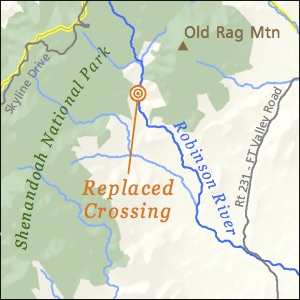
Free Flow
PEC has taken on the work of restoring local rivers by removing culverts and low-water crossings that can be roadblocks to stream health. By replacing these barriers on roads and driveways with fish- friendly designs, we are improving habitat and water quality.
Many aquatic species, including Virginia’s state fish, the Eastern brook trout, benefit from these restoration projects. Ideally, we hope these projects will influence government agencies to incorporate fish-friendly designs as they update roads and stream crossings.
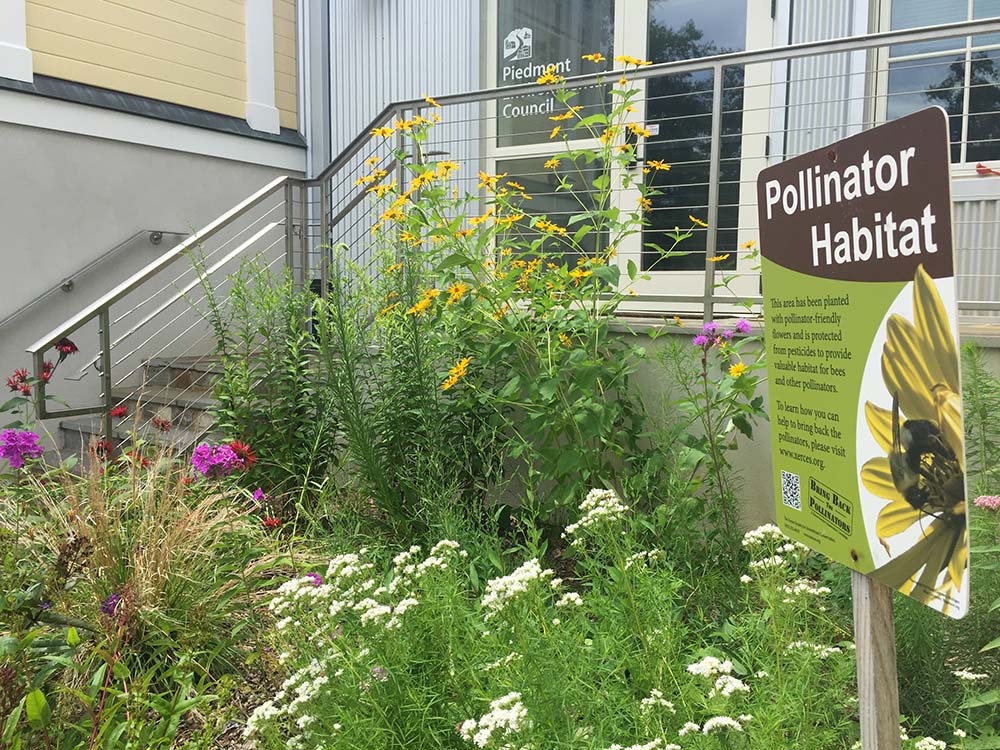
A Buzz Worthy Home
You don’t have to be a genuine bee keeper to help our native bees. You can create a place for them to thrive right in your backyard garden. First, assess your location. Is your project area in full sun, partial sun or is it fully shaded? Soil drainage also matters, whether it’s average, dry or wet soil. Once you know this, pick the plants that would thrive in that specific environment.
Choosing native plants is best for native bees, as they have adapted to each other over time. You can visit the Virginia Plant Atlas at vaplantatlas.org to see a selection of native species or review PEC’s “Go Native Go Local” guide at pecva.org/gonative to find retailers selling natives.
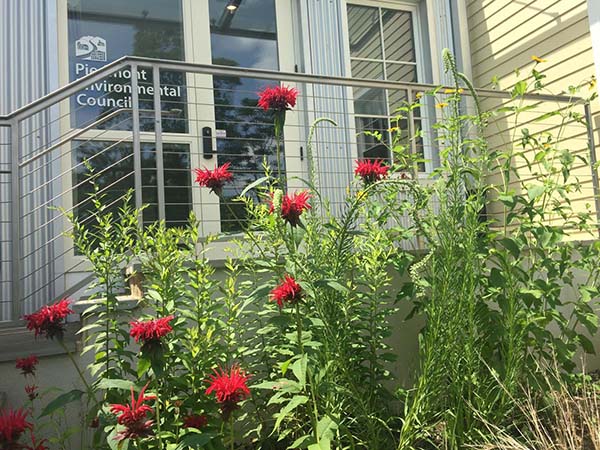
Planting by Example
If you happen to walk by our office in Old Town Warrenton, you may notice some changes around the building — a little more green, some dashes of color and new trees to boot. And along with it being aesthetically pleasing, it is sustainable.
It has been a year and a half since we finished the renovation of our headquarters office. Soon after we moved back in and unpacked, planning for the restoration of the grounds began.
Loudoun Homeowners Associations As Change Agents
The new residential communities of Loudoun and many other counties in our region are managed by Homeowner’s Associations (HOA). In the PEC region, over 60% of Loudoun residents live in an HOA-controlled community. These communities encompass more than 10% of the total land area in Loudoun County.
Beyond Loudoun, in counties, cities and towns that have experienced the growth of new neighborhoods in the last 30+ years, HOA management is the norm for new communities. Understanding the how and why of how landscaping affects our health is critical to making better choices.
A Burn at the Piedmont Memorial Overlook
As part of our ongoing habitat restoration project at our Piedmont Memorial Overlook property near Sky Meadows State Park, the Virginia Department of Forestry helped us conduct a prescribed burn on 5 acres of our native warm season grass meadow. Prescribed fire reduces fuels, suppresses some woody species, recycles nutrients and stimulates plant growth– all of which improves habitat for wildlife.
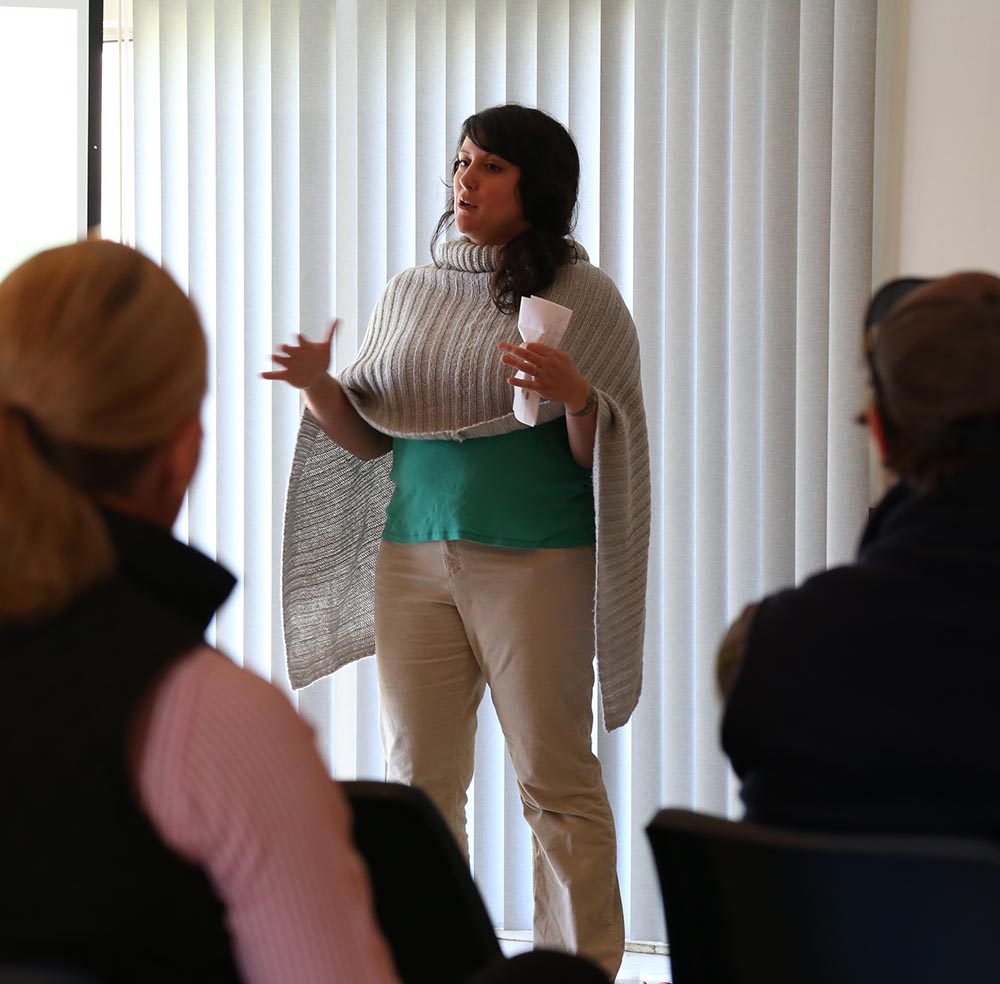
Protecting Thumb Run
What’s good for wildlife is often good for water quality,” said Celia Vuocolo, PEC’s wildlife habitat and stewardship specialist, as she spoke to guests at the fifth Annual Thumb Run Open House.
This sentiment was reinforced at the event, held on November 13 at the Orlean Fire Hall, by speakers Amy Johnson of Smithsonian Conservation Biology Institute’s Virginia Working Landscapes Program, Janet Davis of Hill House Farm and Nursery and Dr. Tania Cubitt of Performance Horse Nutrition LLC, whose presentations focused on grassland bird conservation, landscaping for wildlife and healthy horse pastures, respectively. While the presentation topics varied, the underlying theme was the same — land stewardship supports clean water.
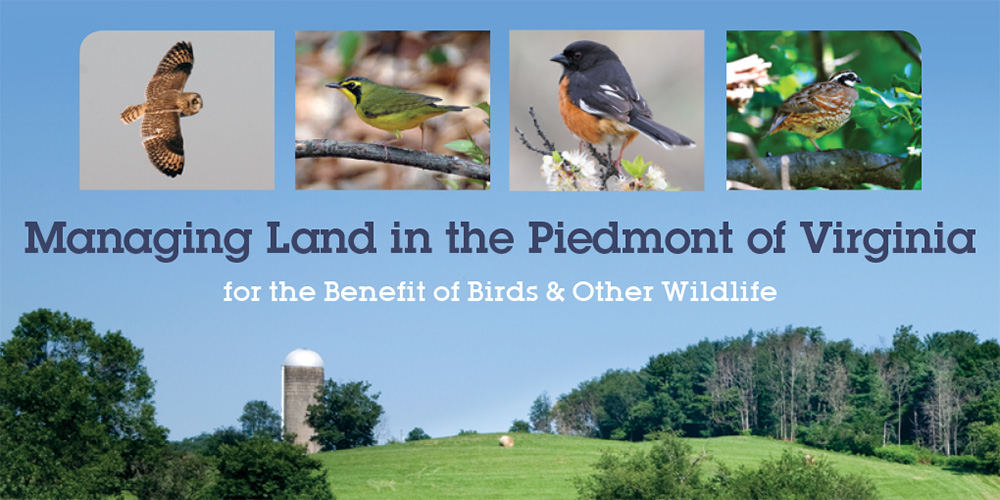
Managing Land in the Piedmont for the Benefit of Birds & Other Wildlife
Interested in managing your property or backyard for wildlife, but not sure where to start? Our guide, Managing Land in the Piedmont of Virginia for the Benefit of Birds and Other Wildlife, introduces landowners to land management options that should be considered for a variety of habitat types.

